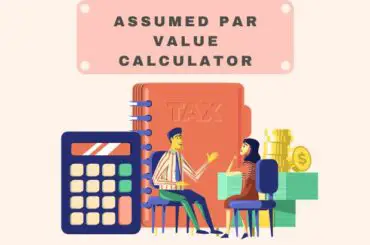Information presented on this web page is intended for informational and educational purposes only and is not meant to be taken as legal, financial, investment or tax advice. We do not accept any responsibility for any trading or investment related losses. Please review our disclaimer on before taking action based upon anything you read or see.
It is very important to comprehend the annual percentage rate (APR) as it applies to credit cards, loans, mortgages, and other types of credit. Thus, we have made this post on Basic APR Calculator to aid you.
The cost of borrowing money is expressed as an annual percentage rate (APR), as reported by the Bureau of Consumer Financial Protection (CFPB). You’ve undoubtedly come across the phrase annual percentage rate if you’ve registered for a credit card, a mortgage, or a vehicle loan (APR).
You can make more educated credit selections if you understand APR. It gives you an excellent sense of the interest rate you’ll pay on loan. And if you’re choosing among credit cards, you may compare APR as one consideration to see which is optimal for you.
There are costs involved with lending money and taking out a loan from an institution. Consumers’ deposits in banks and other financial organizations help such institutions generate revenue. They generate money by charging a portion of the amount lent to those who borrow from them.
This article defines the annual percentage rate (APR), provides instructions for using the Basic APR Calculator and defines APR. Come along!
What is an APR?
The annual interest produced by an amount paid to investors or levied to borrowers is the annual percentage rate (APR). APR is a percentage that expresses the real annual cost of borrowing money throughout a loan or the revenue from an investment.
This does not account for compounding and covers any fees or other expenditures related to the transaction. Consumers may evaluate borrowers, credit cards, or investment goods using the APR as a benchmark figure.
How to use this Basic APR calculator?
You can use this Basic APR calculator through the following steps:
- Enter the loan amount ($).
- Enter the finance fee ($).
- Put the Interest Rate (%).
- Enter the days in Loan Term
- Enter the days in Loan Term Years in Loan Term
- Input the API (%)
- At this point, the basic APR Calculator will process your input and produce the APR.
Basic APR Calculator
How to Calculate Your APR
The principal amount, the length of time the loan will continue, and the additional fees the loan will have, in addition to the interest, must all be considered when calculating the APR of a loan.
Use the following procedures to determine APR:
- Get the interest rate.
- Increase the interest amount by the administrative costs.
- Subtract it from the loan amount (principal)
- Calculate the loan term by dividing it by the total number of days.
- Increase all by 365. (One year)
- To translate this to a percentage, multiply it by 100.
- Use the calculation for the yearly percentage rate:
APR is calculated as follows: ((Interest + Fees / Loan Amount / Days Left in Term)) x 365 x 100
What Factors Affect APR?
Consider that banks are also “shopping” for dependable borrowers who make on-time payments while you look for a low-interest loan or credit card. Financial institutions will consider some variables when determining what APR to offer you in light of this. These consist of:
The credit product type
The most recent figures from the Fed show that the average APR for personal loans is 9.34%, and for auto loans, it is 4.98%. This week, analysts estimate that the average interest rate on 30-year fixed-rate mortgages is 2.81%.
Credit rating
You are eligible for the lowest interest rates if your score is higher.
Payment background
You are more likely to be accepted for reduced rates if you make more on-time payments.
Type of interest rate
The annual percentage rate (APR) for fixed-rate loans remains constant for the entire period. Variable-rate loans vary, so you may be able to save money, but you might also end yourself paying more if rates rise.
Loan period
Usually, the interest rate will increase as the loan duration lengthens. Shorter periods reduce risk since they ensure that the lender will get their money back sooner.
A deposit.
You can be eligible for a reduced rate by providing a bigger down payment.
Benefits and prizes
Better rewards credit cards often have higher APRs.
Location
State and local governments particularly have an impact on mortgages. The mortgage cost may vary by state due to different taxes, property laws, grants, and restrictions.
Fixed and Variable Rate Loans
Loans with fixed interest rates have an interest rate that stays the same throughout the loan. This implies that you make the same payment every month. It indicates that you are confident of the entire interest you will pay throughout the loan.
Student loans, mortgages, car loans, and unsecured consumer lending are just a few of the numerous loan kinds that fall under the umbrella phrase “fixed rate.”
Variable rate loans, on the other hand, have an interest rate that will change over time to market interest rates. They often offer lower initial interest rates than loans with fixed rates. However, the interest rate and the repayment terms are subject to change. They are also sometimes referred to as adjustable-rate loans.
How To Know Which Type of Loan You Have?
You could be wondering what kind of loans you’ll have to finance for your house purchase, new automobile purchase, or further schooling, among other plans. Finding the correct finance amid a sea of different credit choices might be difficult. The most typical loan kinds that span a wide range of funding choices you can come across while attempting to accomplish one of many life objectives have been reduced by our team. They consist of:
1. Loans with open- and closed-ends
Open-ended or closed-ended loans are also possible. A fixed-limit line of credit that may be used repeatedly is a characteristic of open-ended loans. As you use credit, it becomes less accessible and becomes more available as you make payments. Credit cards and credit lines based on home equity are two prevalent types of open-ended loans.
Loans with a closed-end can only be taken out once. The loan amount is predetermined and returned over a certain time. You are not permitted to withdraw additional money while you pay off the loan.
You must go through the loan application and approval procedure if you need to borrow additional money again. Home loans, school loans, and vehicle loans are a few instances of closed-ended loans.
2. Non-conventional and Conventional Loans
Mortgage loans come in two varieties: conventional loans and non-conventional loans. The kind of loan depends on how it is insured and what regulations the lender adheres to.
Government guarantees are provided for unconventional loans. That indicates that these loans, which often have fewer requirements, are insured by the government. This includes a lower credit score and less money needed for a down payment. As a result, they could be a more viable financing choice for someone who doesn’t necessarily fit the requirements of other loans. The FHA, USDA, and VA loans are a few examples of non-conventional loans.
Conventional loans are not guaranteed by any government agency but rather by private lenders like banks, credit unions, or mortgage lenders. Because these loans lack government protection, the lender is the one who might lose money if the borrower fails; hence the qualifying standards are tighter. A higher down payment and a better credit score are often requirements for these loans.
Fixed-rate or Variable Rate Loan
Your particular circumstances and level of flexibility will determine the loan’s size, period, and fixed or variable interest rate. You could select a fixed-rate loan if you appreciate stability and know precisely what your repayments will be over time. Additionally, you may choose a fixed rate loan if you intend to repay your loan over a longer time, such as 10, or 20 years, to remove the danger of interest rate increases over time.
You could choose a variable rate if you want to save as much money as possible. This is besides having the resources to pay higher interest rates and larger monthly payments should they occur. If you anticipate repaying your loan quickly—in 10 years or less—you could also choose variable rate loans.
Variable rate loans’ borrowing costs are based on current market interest rates. Thus changes in the external environment will impact the total amount of interest due.
The choice of loan length, loan amount, and loan type ultimately come down to your circumstances.
Overall, not everyone benefits from the same kind of interest rate. Certain borrowers may prefer a variable interest rate going down in the future. Others may find it more comforting to know that their fixed interest rate would provide an unchangeable adjustable rate of payments that is constant. Consider the risks and drawbacks when deciding whether to make the interest rate on your next loan fixed or variable.
Frequently Asked Questions
How do you calculate APR monthly?
Divide the present percent rate by 12 to get the APR monthly.
What is the APR of 5% per month?
The periodic interest rate is the interest rate expressed in decimal form every month. Interest accumulates regularly. In decimal form, 5% is 0.05 every year. Monthly: 0.05/12 = 0.00417.
What is the APR for 1% per month?
The periodic interest rate is the interest rate expressed in decimal form every month. Interest accumulates regularly. In decimal form, 1% is 0.01 each year. Each month, 0.01/12 equals 0.00183.
What is 24% APR on a credit card?
If your credit card has a 24% APR, you will be charged that amount over 12 months, which works out to 2% monthly. Due to the variable duration of months, credit cards further dissect APR into a daily periodic rate.
What is an APR example?
For instance, if a credit card’s annual percentage rate (APR) is 10%, you may pay around $100 for $1,000 borrowed yearly. The loan or credit card with the lowest APR is often the cheapest, all other things being equal.
Expert Opinion
The annual percentage rate, or APR, is the total cost of borrowing money from a bank or other financial organization. It takes into account all the different fees connected with borrowing money.
This covers fines for being late, additional fees, administrative costs, and more. This makes it an excellent method for determining the overall cost of borrowing.
In other words, a particular loan’s annual percentage rate (APR) is the sum of annual interest payments expressed as a percentage of the loan. APR is a metric used to assess how much it will cost to borrow money from various lenders.
The credit card or credit with the lowest APR will be the cheapest if all other criteria are equal. Furthermore, you will need the aid of the basic APR calculator if you need to process this without hassles.






